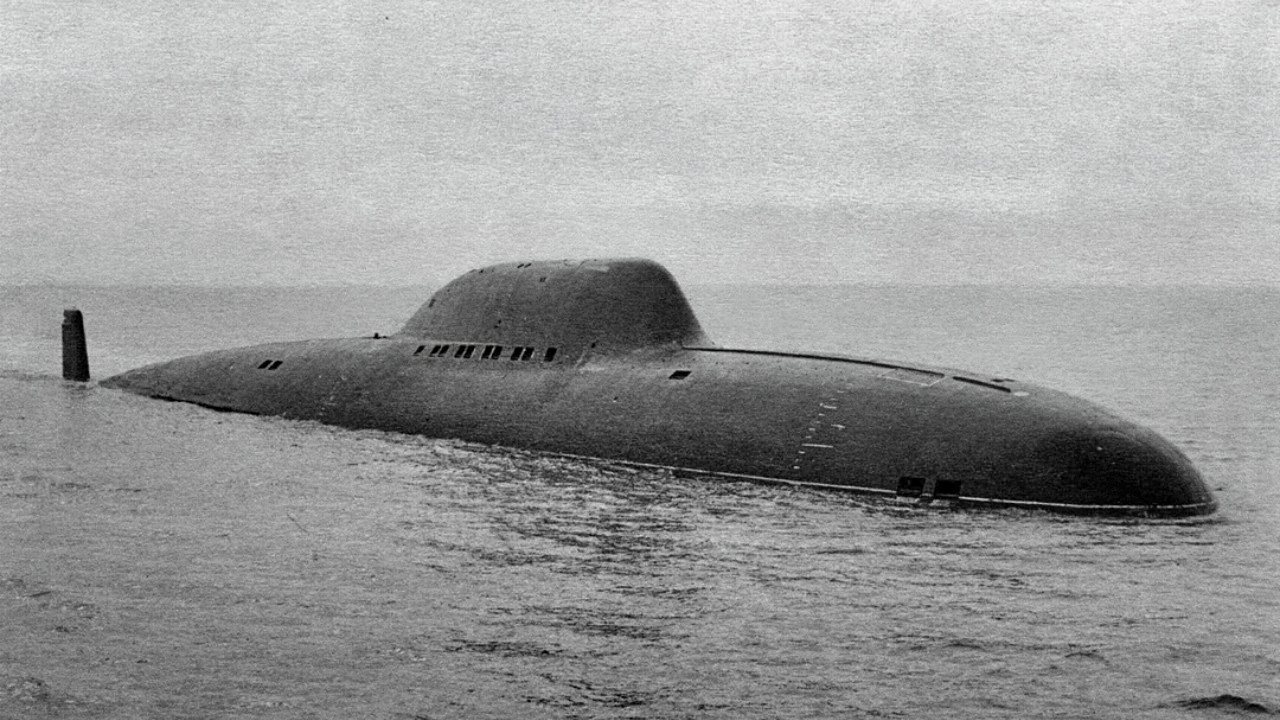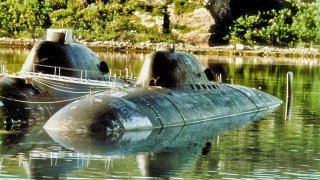The U.S. Navy Has Nothing Like Russia's Titanium Sierra-Class Submarines
Titanium's strength and lightweight properties made it an attractive material for various applications, from sporting goods to military equipment. While the U.S. used titanium in aircraft like the SR-71, the Soviet Union employed it for submarine construction, notably the Sierra II-class submarines.
Summary and Key Points: Titanium's strength and lightweight properties made it an attractive material for various applications, from sporting goods to military equipment. While the U.S. used titanium in aircraft like the SR-71, the Soviet Union employed it for submarine construction, notably the Sierra II-class submarines.
-These submarines, built for deep diving and low noise, were among the most advanced of their time, thanks to their titanium hulls. However, the difficulty and cost of working with titanium limited further production.
-Despite their capabilities, the Sierra II-class submarines, such as the Nizhny Novgorod and Pskov, have seen little action in recent years and rarely leave port.
The Rise and Fall of Russia’s Titanium Sierra II-Class Submarines
Titanium is rather common today – a fact that might not seem all that impressive for those who have bought titanium golf clubs, bicycles, and even skis. Last year, there were reports that after decades of diminishing domestic production capacity, the U.S. withdrew from titanium sponge production by 2020 and now relies entirely on foreign sources.
Japan currently supplies upwards of 92% of the U.S. titanium sponge imports.
Following the end of the Cold War, titanium became the "go-to" material of choice for many high-end consumer products. The strength-to-weight ratio made titanium a great material choice in the sporting goods market where weight reduction was beneficial. Not only could sporting equipment with a low density improve the performance of athletes, but titanium could allow it to last longer.
While the U.S. was focused on leisure products and consumer goods, Russia was thinking in another direction. It used the lightweight metal – which has the strength of steel, yet is far lighter, offers high resistance to corrosion, low level of elasticity, and tolerance to scratch and damage – to build its submarines.
As previously reported by Maya Carlin for The National Interest, the Soviet's Alfa-class was the first to employ a titanium hull. However, it proved to be far from an easy material to work with. To successfully weld huge titanium panels on a large scale, Soviet engineers had to first create enormous warehouses that were hermetically sealed then filled with argon, an inert gas that would not interfere with the welding process. Welders had to wear a large cosmonaut-like suit that would supply them with oxygen while inside these warehouses. Moreover, the welders needed their own source of oxygen, while any misstep in the welding process could create a sub that would be dangerous to take on deep dives – as the higher pressure could compromise the weakened hull.
Titanium is costly compared to iron, and it isn't exactly easy to shape either. Any misstep by the welders would create a sub that would be dangerous to take on deep dives. The higher pressure could compromise the weakened hull.

While the U.S. did build its Lockheed SR-71 "Blackbird" spy plane out of titanium, the U.S. Navy didn't opt for titanium-hulled submarines for many of those reasons.
Enter the Sierra II-Class Titanium Submarine
The Russian Navy's Sierra II-class submarines, also known as Project 945A Kondor class, remain among the most expensive and deep-diving boats ever built. As a follow-up to the Sierra I, the subs were specifically developed for search-and-destroy missions against U.S. nuclear-powered ballistic missile submarines.
The Sierra II class was unique due to its light and strong titanium twin-pressure hulls, which took advantage of the material's key properties.
It also featured space in between. That enabled the boats to dive to greater depths, while it reduced the level of radiated noise and increased resistance to torpedo attacks. Like the original Project 945 Barrakuda, the Project 945A boats were powered by a single OK-650 pressurized water reactor, rated at 190 MW.

The Sierra II also had greater speed and diving depth than its American counterparts at the time it was designed and would have been a serious threat if the Cold War turned hot. Two of the submarines were completed – the Pskov (ex-Zubatka) and Nizhny Novgorod (ex-Okun) – and both remain operational with the Russian Navy's Northern Fleet. A third of the class, Mars, was laid down in 1990. That boat was built to an improved Project 945B (NATO designation Sierra III class), but it was scrapped before completion in 1992.
The Soviet Union didn't build additional Project 945A Kondor Class submarines due to the high cost of the materials, and the difficulties in working with titanium.
While Moscow regularly touts the capabilities of its military vessels, there has been surprisingly little said of the two Project 945A Kondor Class submarines in recent years.
A November 2019 report from state media outlet Tass noted that the Nizhny Novgorod and Pskov held an underwater duel with torpedo practice fire in drills.
"The crews of the Northern Fleet's multipurpose nuclear-powered submarines Nizhny Novgorod and Pskov performed planned assignments in the Barents Sea… Torpedo practice fire against surface targets was the most complex and responsible stage of the joint underwater maneuvers. The crews of the Northern Fleet's multipurpose nuclear-powered submarines Nizhny Novgorod and Pskov performed this exercise in the duel version," the press office of the Russian Navy's Northern Fleet announced in a statement.
The submariners further were reported to have practiced combat maneuvering with their switchover to an attacking position and breaking from the enemy force by way of jamming and setting up dummy targets, according to the statement.
However, in the more than four years that followed there has been virtually no mention of the boats – and while they officially remain in service, it is believed both rarely leave port.
Author Experience and Expertise: Peter Suciu
Peter Suciu is a Michigan-based writer. He has contributed to more than four dozen magazines, newspapers, and websites with over 3,200 published pieces over a twenty-year career in journalism. He regularly writes about military hardware, firearms history, cybersecurity, politics, and international affairs. Peter is also a Contributing Writer for Forbes and Clearance Jobs. You can follow him on Twitter: @PeterSuciu.
You can email the author: [email protected].
Image are Creative Commons images of various Russian submarines.


